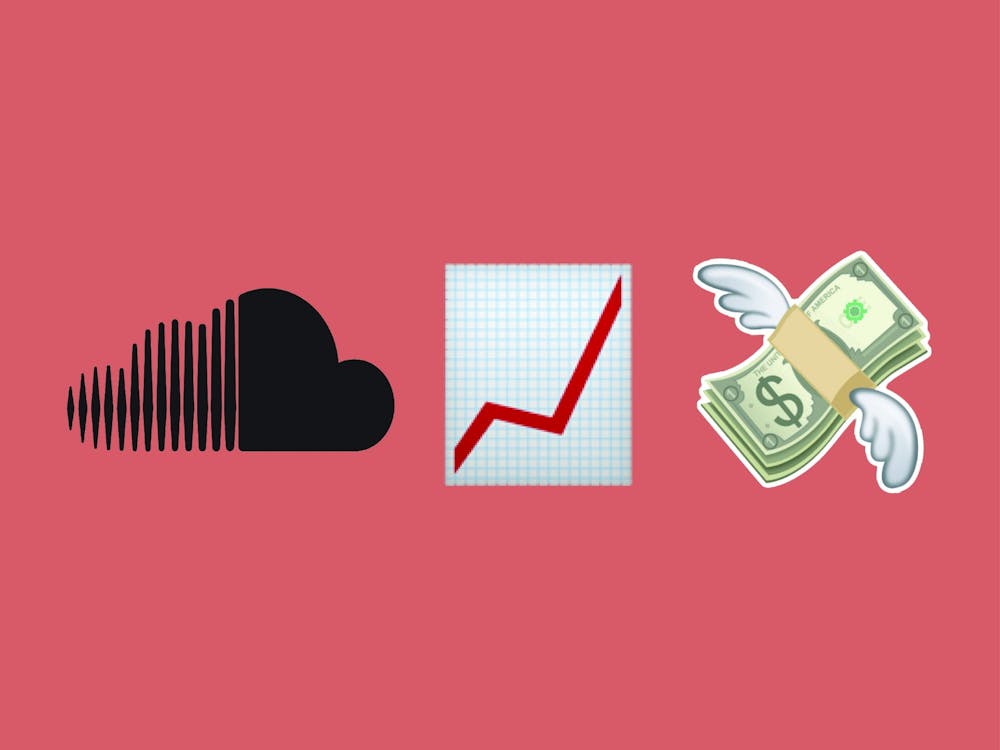Now that rap has overtaken rock as the most profitable genre, it is reasonable to view hip-hop as its own economy. The genre itself operates on a modified boom and bust cycle. There are booms, which see expansion culminate in a peak, and busts, in which rap contracts into a trough.
During the booms, rappers release grotesquely commercially successful albums about partying, sex and living the high life. This period makes the most money, but grows stale quickly, and by the end, the looming recession sucks out all the joy found on these projects. Booms include the bling era of the mid-2000s and the “SoundCloud rap” of recent years, where a high-energy, braggadocious formula was well established, and the market was filled with an eager set of similar artists.
The booms are unsustainable, though, and busts begin before many even realize. Hit-making juggernauts buy their success on the credit of their previously established relevance, but when that fades and new rappers cannot just copy and stay consistent, the bar to blow up is set much higher — an inflationary buy-in, so to speak. As top grossing rappers fade from heydays into mentorship roles, the genre is quieter and less prominent on the charts and radio. But to the rap fan, these periods are infinitely more exciting. The busts are when the genre is tinkered with, modified to fit into the contemporary landscape.
The last bust followed the bling era, and saw the invention of drill music. Bling was devoted to larger than life depictions of club life, success and debauchery. The beats were expensive-sounding, thunderous concoctions of maximalist instrumentation. It was music that instantly turned any party into a raucous affair. But, it was dishonest, unrelatable and lasted years too long.
Drill is marked by trap beats and stark, literal lyrics void of flowery metaphors and punchlines. It is realism in rap that stands in direct contrast to the romanticism of Drake and the bling king 50 Cent, for example. Themes of adolescent drug use and gang activity unintentionally shone a light on inequality and the real, gritty issues the African American youth face every day. True drill is dark and unglamorous.
The subgenre developed slowly in Chicago as pioneer Chief Keef struggled to find a foothold. He realized that to gain any traction, his music would need to be fun, so he borrowed elements of bling, including loud and entrancing beats and an aura of violent indifference. He released three successful singles that hold up as some of the best drill songs of all time (“I Don’t Like,” “Love Sosa” and “Hate Bein’ Sober”). When his album “Finally Rich” dropped in December 2012, drill erupted.
Keef was signed to Interscope as his singles were gaining buzz, and his proteges and fellow GBE rappers Lil Reese and Lil Durk signed to Def Jam Recordings. The hype was mounting and debates raged over drill’s longevity. The uncomplicated lyrics drew criticism from hip-hop heads. When it was announced that “Finally Rich” only sold 50,000 units in its first week, critics began to write it off. However, this was indicative of a much larger phenomenon.
Drill is the first genre ever to exist purely on the internet. A vast majority of its consumption came from streams and YouTube plays. Web dependence and the lyrical content behind drill became the two pillars of SoundCloud rap, which tore through the music world like a 10,000-degree machete. This is a prime example of how the bust periods of rap are vital to commercial success. Drill walked so SoundCloud could soar.
Inevitably, SoundCloud rap aged past its prime and lost its youthful magic. Like bling, proponents of the subgenre denied the arrival of the bust for years too long. However, with Juice WRLD’s death, the genre has officially died. While he was not the only active SoundCloud rapper, his demise did reveal how his cohorts had either lost all relevance (Lil Pump, Lil Yachty, Ugly God, Famous Dex), been incarcerated (Kodak Black, Tay K, YNW Melly) or died (Lil Peep, XXXTENTACION).
And now, the multibillion-dollar question is, “where is rap going?” Some claim that rap music is dead, that the bizarre and polarizing SoundCloud era was the final evolution of a genre that aged horrifically. However, after every crash doomsayers gravitate towards the crater like moths to Las Vegas. Any industry this profitable will not just disappear. No genre with the potential to overthrow rap as the musical centerpiece of the nation has yet emerged.
Every bust is shaped by its boom and vice versa, but there is no diagrammable progression that rap takes. The “Golden Age” of the 1990s fractured rap into hundreds of subgenres, and every new boom weaves together a few of them, using their unforeseen compatibilities to create something new and exciting. Although the history of rap makes sense looking back, it is essentially random and impossible to predict from any point. If you had played me Earl Sweatshirt’s “Some Rap Songs” in 2014, I would have erupted in patronizing laughter and vehemently objected to the notion that it would birth a new, vibrant subgenre just four years later.
On the other hand, rap has some patterns. Over the next few months, this column will examine the subgenres bubbling under the surface of rap, from the new drill to grime to styles that do not even have names yet. They are set to develop, merge, die and evolve for years. Then, hopefully by 2026, they will have coalesced into yet another industry-shattering super-genre that fits so well into the temporal fabric that it, like SoundCloud rap, will be remembered for centuries.
Get The Chronicle straight to your inbox
Signup for our weekly newsletter. Cancel at any time.

